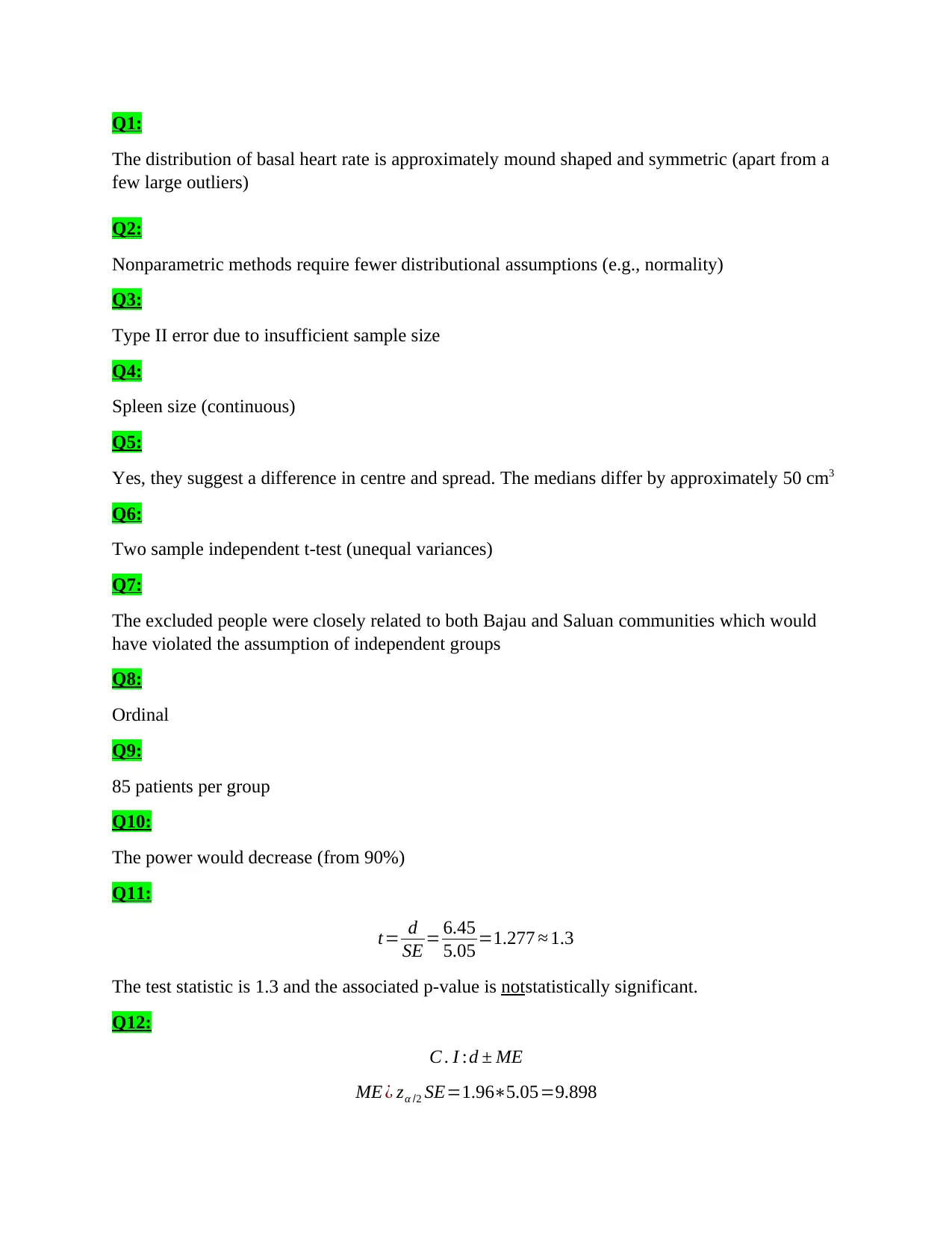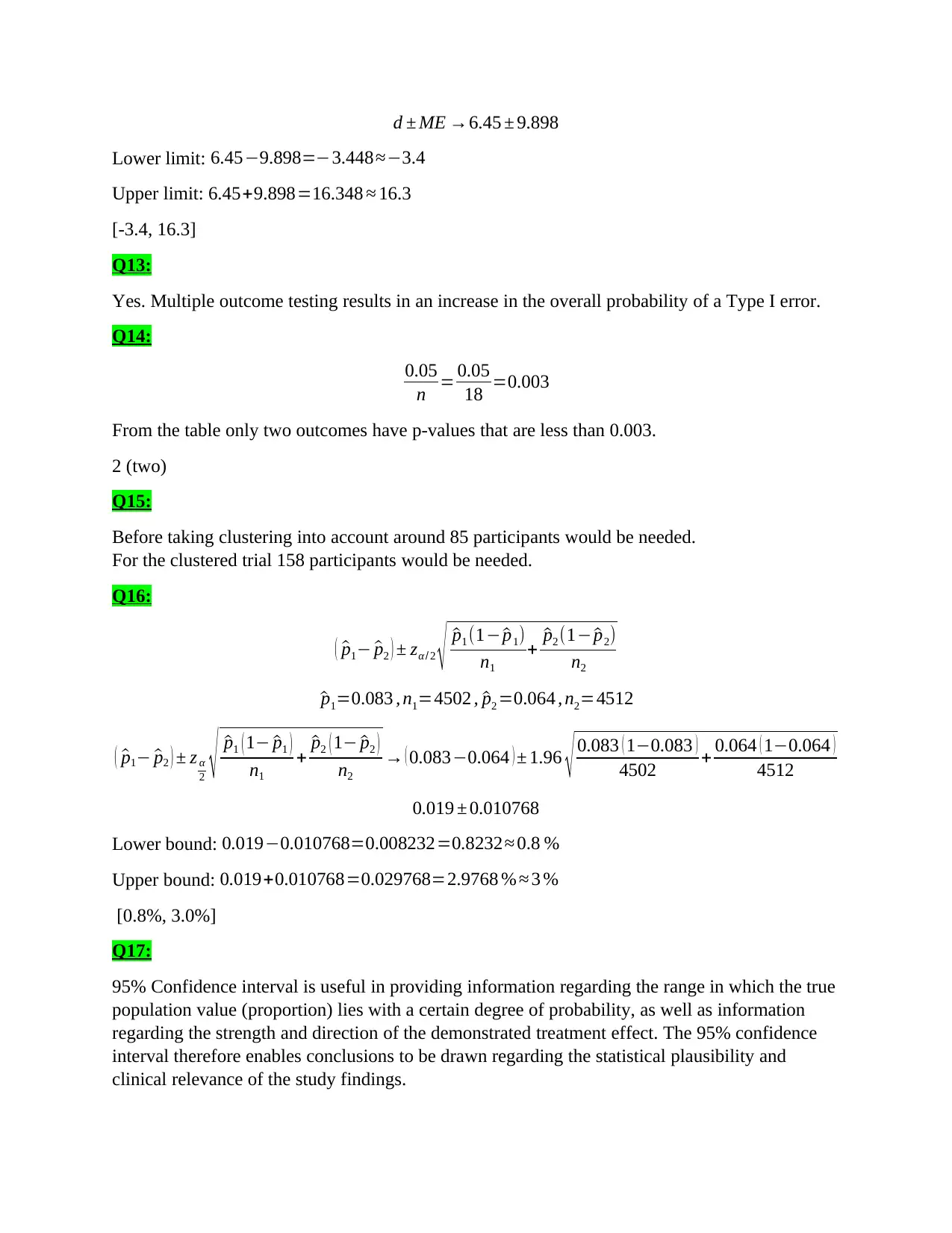Statistics Assignment Solutions - Data Analysis, Tests, and Results
VerifiedAdded on 2022/12/15
|4
|382
|56
Homework Assignment
AI Summary
This assignment solution covers several key concepts in statistics, including the analysis of basal heart rate distributions, the advantages of nonparametric methods, and the interpretation of statistical significance. It explores the implications of sample size on statistical outcomes, specifically addressing Type I and Type II errors. The solution also delves into specific statistical tests, such as the two-sample independent t-test, and the importance of considering factors like clustering in experimental design. Furthermore, the document explains the calculation and interpretation of confidence intervals, emphasizing their role in providing information about the range of population values and the strength and direction of treatment effects. Finally, the assignment clarifies common misconceptions regarding p-values and the interpretation of statistical results.
1 out of 4











![[object Object]](/_next/static/media/star-bottom.7253800d.svg)